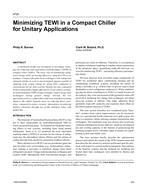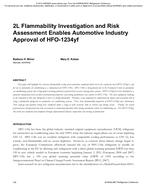Evidence from a variety of research suggests that the built environment contributes substantially to global energy consumption and to theproduction of gases that impact climate change: buildings use about 40% of the world-wide total energy, and up to 60% are used for building airconditioning. This fact highlights the importance of targeting air conditioning energy use as a key to decrease the energy consumption. Hence, net zeroenergy buildings (NZEB) have been suggested as an approach to achieving this goal. Ultraviolet photocatalytic oxidation (UV-PCO) technology isconsidered as a reliable and efficient air cleaning technology for providing acceptable indoor air quality while reducing the building energy consumption.However, the possible production of some hazardous by-products such as formaldehyde and acetaldehyde and their subsequent effects on occupants isone of the challenging areas for commercial application of this technology. This paper reports the outcomes of a pilot scale experimental study foridentification and quantification of generated by-products in UV-PCO system. The experiments were conducted using two types of UV lamps andtwo types of catalysts with four types of commonly found volatile organic compounds in the indoor environments. They included ethanol, toluene,acetone, and octane. Lp-DNPH air samples were collected from the upstream and downstream and analyzed by HPLC for by-productsquantification. The novelty of this paper relies on investigation of ozone effect using VUV lamps in the formation of acetaldehyde and formaldehydein a pilot scale apparatus along with quantification of generated by-products. Furthermore, in order to estimate the level of risk to occupants’ health,a health- related index (HRI) was implemented for produced formaldehyde and acetaldehyde. Experimental results show that UV/TiO2/O3process outperformed UV/TiO2 especially in the case of toluene mineralization. Formaldehyde is the main by-products which responsible for healthrisk especially in the case of ethanol and octane.
Citation: IAQ Conference: IAQ 2013: Environmental Health in Low Energy Buildings
Product Details
- Published:
- 2013
- Number of Pages:
- 8
- File Size:
- 1 file , 1.8 MB
- Product Code(s):
- D-2013IAQConf-29


